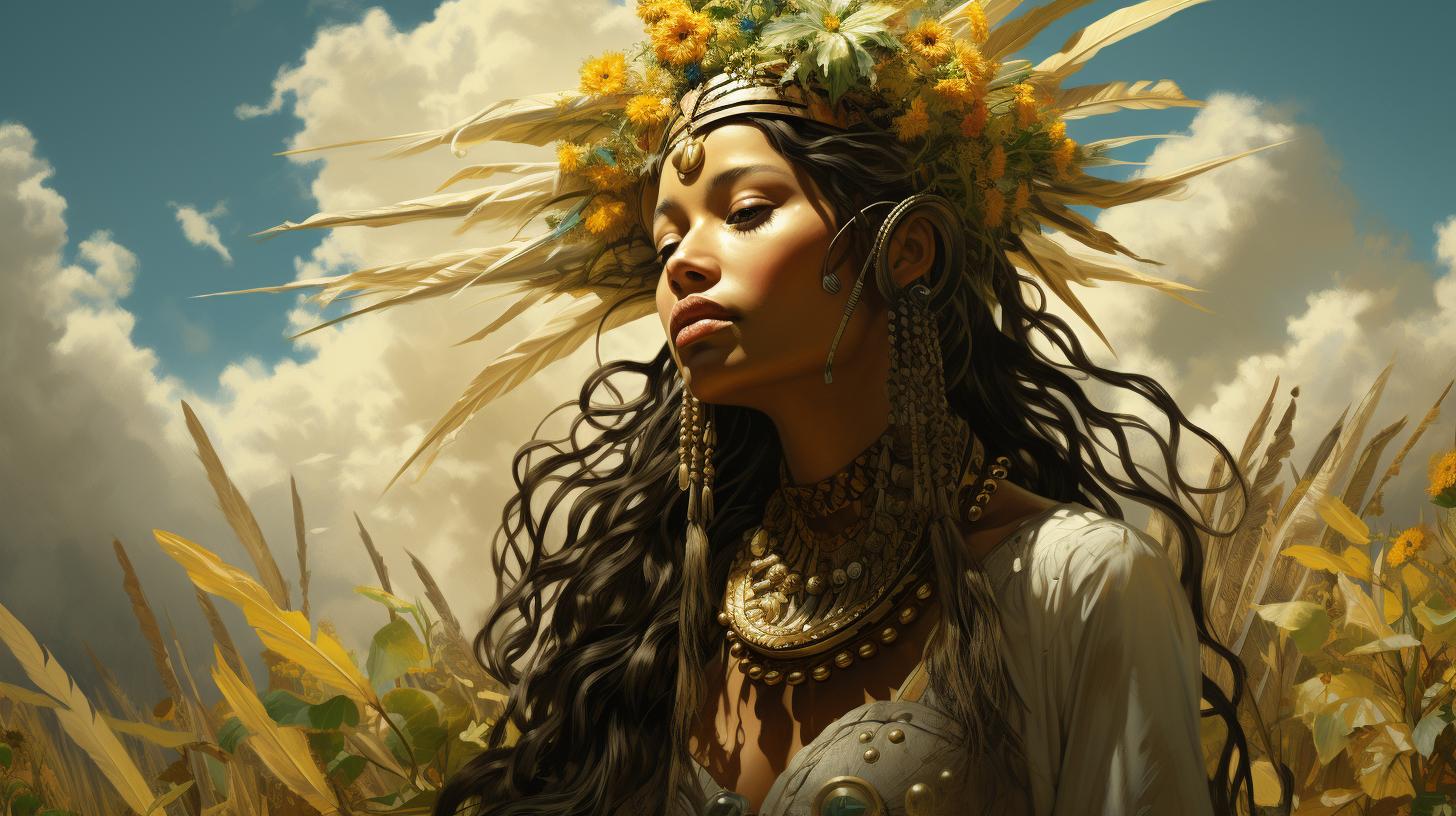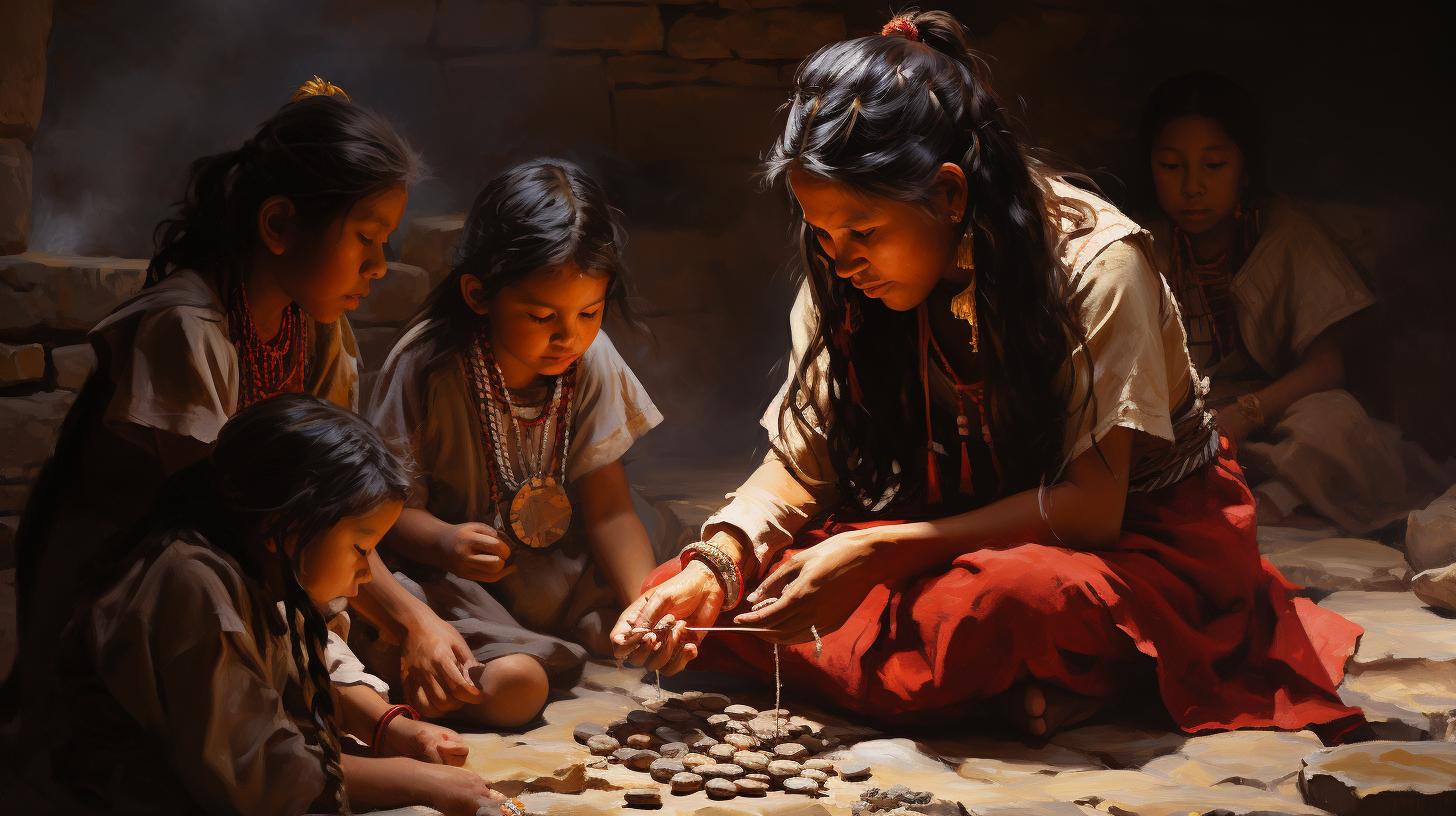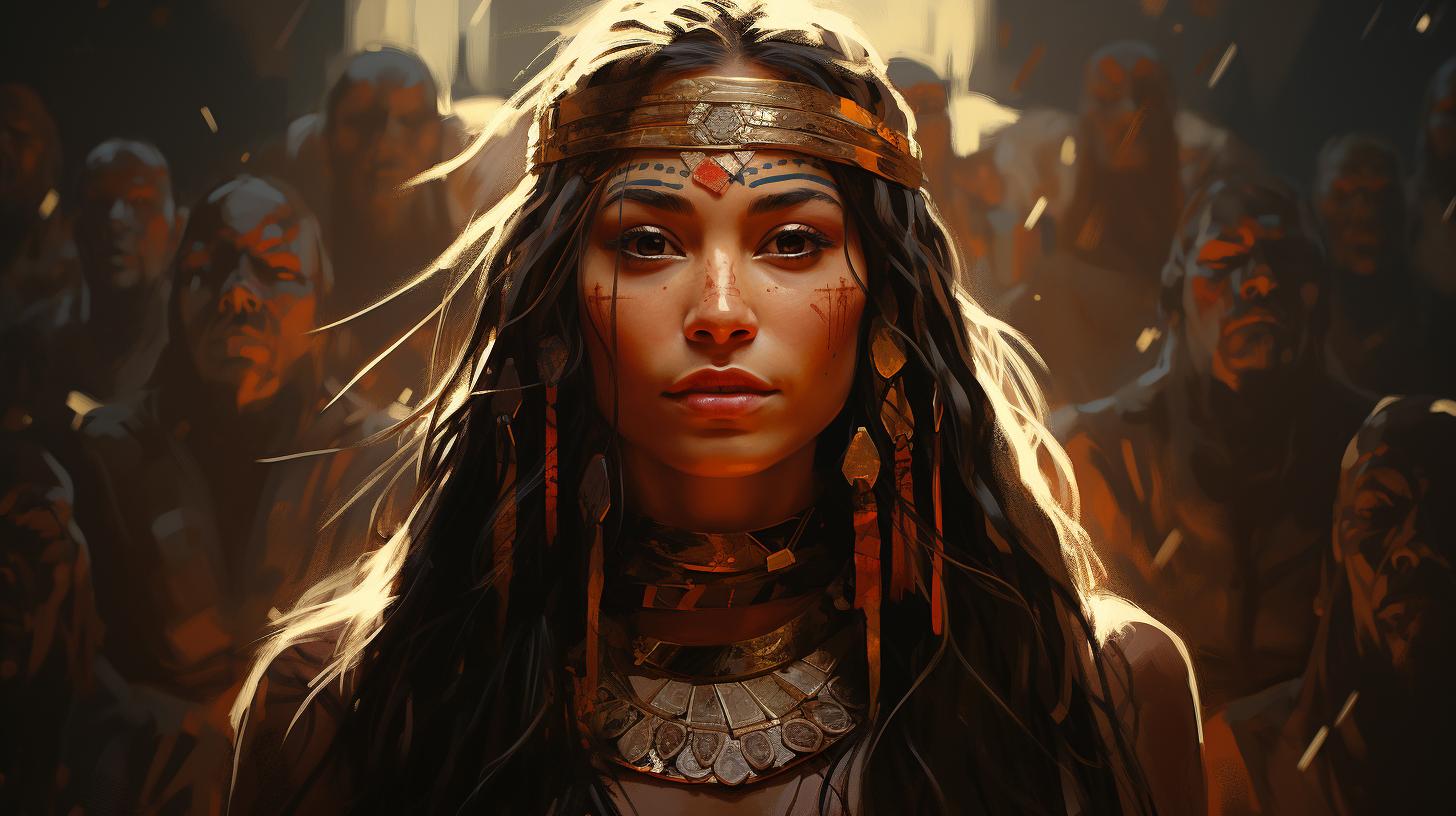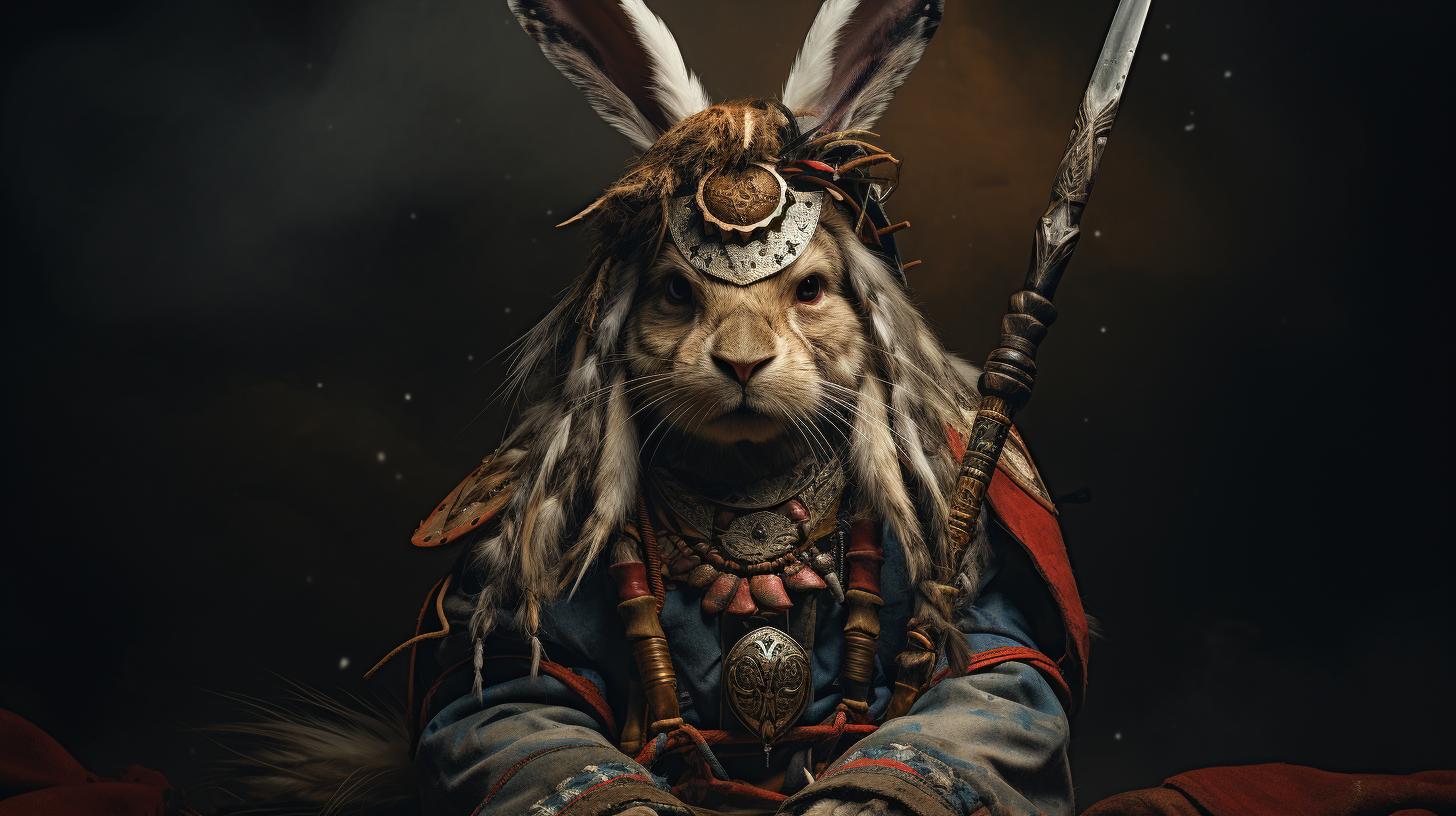Cherokee Goddess Selu: The Divine Figure of Corn, Harvest, and Prosperity

The Cherokee Goddess Selu holds a significant role in Native American mythology. She is revered by the Cherokee, Aztec, and Hopi cultures for her association with corn, harvest, and growth.
In Cherokee tradition, Selu’s selfless act ensured her people’s survival by planting her heart, which yielded the maize. This article explores Selu’s stories, rituals, and her influence on contemporary Cherokee society.
Additionally, it delves into the temple dedicated to Selu in the Cherokee Reservation and the cultural significance of corn in Cherokee cuisine and artwork. Discover the rich heritage this revered deity brings to the modern world.
Native American Mythology: Exploring the Cherokee Goddess Selu
Native American mythology is rich with fascinating tales and deities, including the revered Cherokee Goddess Selu. This section delves into the significance of Selu in Cherokee culture and her presence in Aztec and Hopi traditions.
The Significance of Selu in Cherokee Culture
Selu holds immense importance in Cherokee culture as the goddess of corn, harvest, and growth. She is renowned for her selfless act of planting her heart, which gave rise to the life-sustaining crop of maize.
Through this act, Selu ensured the survival and prosperity of her people, making her a symbol of abundance and nourishment.
Selu in Aztec and Hopi Traditions
While Selu is primarily associated with Cherokee mythology, her influence extends beyond their culture. In Aztec traditions, she is known as Chicomecoatl, also representing the goddess of corn and fertility.
The Aztecs performed a ritual each year to bless the corn crop. In Hopi culture, Selu takes on the name Qocha Mana and plays a role in a powerful tale of gratitude and sustenance.
Discover the captivating stories and the enduring legacy of the Cherokee Goddess Selu as we delve deeper into her mythology.
The Story of Selu: A Tale of Sacrifice and Abundance
The story of Selu, the Cherokee goddess, is a poignant tale of sacrifice and abundance. This divine figure played a crucial role in ensuring the survival and prosperity of her people through her selfless act and blessings.
Selu’s Gift: Planting the Seeds of Survival
In Cherokee mythology, Selu planted her heart to provide sustenance and prevent her people from experiencing hunger. From her heart, maize sprouted, becoming a vital source of food. This act of sacrifice and generosity symbolizes Selu’s love for her people and her commitment to their well-being.
Cherokee Rituals and Celebrations in Honor of Selu
The Cherokee people hold reverence for Selu and express their gratitude through various rituals and celebrations. These ceremonies not only honor Selu but also serve as a way to connect with the abundance of the harvest and strengthen their bond with the natural world.
The rituals involve offerings, prayers, and dances, where the community comes together to celebrate Selu’s blessings.
Chicomecoatl: Selu’s Aztec Counterpart and Corn Blessings
In Aztec culture, Selu is known as Chicomecoatl, the goddess of corn and fertility. Similar to Selu, Chicomecoatl represents the abundance of the harvest and blesses the crops for a prosperous yield.
Aztec rituals, including the blessing of corn, symbolize the importance of corn as a staple food and honor Chicomecoatl’s role in ensuring food security.
Qocha Mana: Selu’s Role in Hopi Culture and the Dance of Gratitude
Among the Hopi tribe, Selu is referred to as Qocha Mana.
According to Hopi mythology, a winter storm left the tribe’s women and children with limited food while the men were away hunting. In their absence, Selu’s intervention through the dance of gratitude ensures the tribe’s survival.
The tears of Kokopelli, who plays the flute during the dance, transform into maize seeds, symbolizing Selu’s abundant blessings and the sustenance it brings to the Hopi community.
Selu’s Influence on Contemporary Cherokee Society
In present-day Cherokee society, the legacy of Selu, the revered goddess of corn and harvest, continues to shape various aspects of their culture.
From the presence of the Temple of Selu to the influence on Cherokee cuisine and the symbolism in their arts and crafts, Selu remains a significant figure in Cherokee communities.
The Temple of Selu: A Sacred Monument in Cherokee Reservation
Situated within the Cherokee Reservation, the Temple of Selu stands as a sacred monument dedicated to honoring the goddess.
This architectural masterpiece, featuring intricate designs and sculptures, serves as a symbol of reverence and spirituality in the midst of the dominance of Christian churches in the area.
Cherokee Cuisine: Exploring the Legacy of Corn and Selu
The importance of corn and Selu in Cherokee culture transcends beyond mythology and extends into their culinary traditions.
Cherokee cuisine embraces the richness of corn and its diverse preparations, showcasing the deep connection between food and spirituality. Recipes like ‘Tsalagi Wadulisi Selu Gadu’ or ‘Cherokee Cornbread with Honey’ celebrate the sacredness of Selu and the bountiful harvest she provides.
Selu’s Symbolism in Cherokee Arts and Crafts
Cherokee arts and crafts are deeply intertwined with the symbolism of Selu. Intricate beadwork, pottery, and basketry often depict representations of Selu and her connection to maize, fertility, and abundance. These artistic creations serve as a visual testament to the enduring legacy of Selu and her role in sustaining Cherokee traditions.
Selu in the Modern World: Reviving the Connection to Nature and Harvest
As we enter the modern world, the significance of Cherokee Goddess Selu continues to resonate, particularly in relation to revitalizing our connection to nature and promoting sustainable farming practices.
Selu’s Message for Environmental Conservation and Sustainable Farming
Selu’s story serves as a powerful reminder of the importance of environmental conservation and sustainable farming.
Today, many individuals and organizations draw inspiration from Selu’s selfless act of planting her heart to ensure the survival and abundance of her people. By embracing Selu’s message, we can cultivate a deeper respect for the natural world and work towards sustainable agricultural practices that preserve our planet for future generations.
Selu’s Legacy: Inspiring Women and Empowering Native Communities
One of the remarkable aspects of Selu’s story is the empowerment it provides to women in Native American communities. Selu’s nurturing and life-giving qualities highlight the valuable role women play in sustaining their families and communities.
Her legacy serves as an inspiration for women, encouraging them to embrace their strengths and contribute to the growth and well-being of their communities.
Rediscovering Selu: Cultural Preservation Efforts and Awareness Campaigns
To ensure the preservation of Cherokee traditions and the legacy of Selu, dedicated efforts are underway to rediscover and revitalize the connection to this revered goddess.
Cultural preservation initiatives, awareness campaigns, and educational programs aim to foster a deeper understanding of Selu’s importance and the cultural significance of corn in Cherokee traditions. By promoting awareness and appreciation, these efforts strive to ensure that Selu’s role in Native American mythology remains cherished and celebrated for generations to come.
This modern exploration of Selu’s influence seeks to forge a stronger bond between humanity and the natural world, promote gender equality, and preserve the rich cultural heritage of the Cherokee people.
.




















